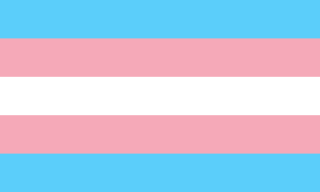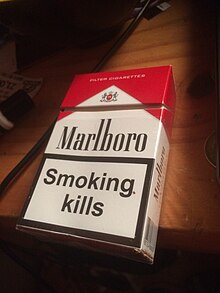
The United States Food and Drug Administration is a federal agency of the Department of Health and Human Services. The FDA is responsible for protecting and promoting public health through the control and supervision of food safety, tobacco products, caffeine products, dietary supplements, prescription and over-the-counter pharmaceutical drugs (medications), vaccines, biopharmaceuticals, blood transfusions, medical devices, electromagnetic radiation emitting devices (ERED), cosmetics, animal foods & feed and veterinary products.

ISO 3864 specifies international standards for safety signs and markings in workplaces and public facilities. These labels are graphical, to overcome language barriers. The standard is split into four parts.

The United States Federal Food, Drug, and Cosmetic Act is a set of laws passed by the United States Congress in 1938 giving authority to the U.S. Food and Drug Administration (FDA) to oversee the safety of food, drugs, medical devices, and cosmetics. The FDA's principal representative with members of congress during its drafting was Charles W. Crawford. A principal author of this law was Royal S. Copeland, a three-term U.S. senator from New York. In 1968, the Electronic Product Radiation Control provisions were added to the FD&C. Also in that year the FDA formed the Drug Efficacy Study Implementation (DESI) to incorporate into FD&C regulations the recommendations from a National Academy of Sciences investigation of effectiveness of previously marketed drugs. The act has been amended many times, most recently to add requirements about bioterrorism preparations.

The Federal Insecticide, Fungicide, and Rodenticide Act (FIFRA) is a United States federal law that set up the basic U.S. system of pesticide regulation to protect applicators, consumers, and the environment. It is administered and regulated by the United States Environmental Protection Agency (EPA) and the appropriate environmental agencies of the respective states. FIFRA has undergone several important amendments since its inception. A significant revision in 1972 by the Federal Environmental Pesticide Control Act (FEPCA) and several others have expanded EPA's present authority to oversee the sales and use of pesticides with emphasis on the preservation of human health and protection of the environment by "(1) strengthening the registration process by shifting the burden of proof to the chemical manufacturer, (2) enforcing compliance against banned and unregistered products, and (3) promulgating the regulatory framework missing from the original law".

The Comprehensive Smoking Education Act of 1984 is an act of the Congress of the United States. A national program established in order to improve the availability of information on health risks related to tobacco smoking, to amend the Federal Cigarette Labeling and Advertising Act so that cigarette warning labels would be different, and for other reasons, the Comprehensive Smoking Education Act was enacted with a purpose to, as stated in Section 1 of the Act, "provide a new strategy for making Americans more aware of any adverse health effects of smoking, to assure the timely and widespread dissemination of research findings and to enable individuals to make informed decisions about smoking". Adopted by Congress in 1984 and effective October 12, 1984, the Comprehensive Smoking Education Act created a rotational warning system that required all cigarette packages and advertisements to rotate the following four warnings every three months:

Altria Group v. Good, 555 U.S. 70 (2008), was a United States Supreme Court case in which the Court held that a state law prohibiting deceptive tobacco advertising was not preempted by a federal law regulating cigarette advertising.

Tobacco politics refers to the politics surrounding the use and distribution of tobacco.
Hazard statements form part of the Globally Harmonized System of Classification and Labelling of Chemicals (GHS). They are intended to form a set of standardized phrases about the hazards of chemical substances and mixtures that can be translated into different languages. As such, they serve the same purpose as the well-known R-phrases, which they are intended to replace.
Hazard pictograms form part of the international Globally Harmonized System of Classification and Labelling of Chemicals (GHS). Two sets of pictograms are included within the GHS: one for the labelling of containers and for workplace hazard warnings, and a second for use during the transport of dangerous goods. Either one or the other is chosen, depending on the target audience, but the two are not used together for the same hazard. The two sets of pictograms use the same symbols for the same hazards, although certain symbols are not required for transport pictograms. Transport pictograms come in wider variety of colors and may contain additional information such as a subcategory number.

The Family Smoking Prevention and Tobacco Control Act, is a federal statute in the United States that was signed into law by President Barack Obama on June 22, 2009. The Act gives the Food and Drug Administration the power to regulate the tobacco industry. A signature element of the law imposes new warnings and labels on tobacco packaging and their advertisements, with the goal of discouraging minors and young adults from smoking. The Act also bans flavored cigarettes, places limits on the advertising of tobacco products to minors and requires tobacco companies to seek FDA approval for new tobacco products.

The United States Food and Drug Administration Modernization Act of 1997 (FDAMA) amended the Federal Food, Drug, and Cosmetic Act. This act is related to the regulation of food, drugs, devices, and biological products by the FDA. These changes were made in order to recognize the changes in the way the FDA would be operating in the 21st century. The main focus of this is the acknowledgment in the advancement of technological, trade, and public health complexities.
ISO 14971Medical devices — Application of risk management to medical devices is a voluntary standard for the application of risk management to medical devices. "Voluntary standards do not replace national laws, with which standards' users are understood to comply and which take precedence" over voluntary standards such as ISO 13485 and ISO 14971. The ISO Technical Committee responsible for the maintenance of this standard is ISO/ TC 210 working with IEC/SC62A through Joint Working Group one (JWG1). This standard is the culmination of the work starting in ISO/IEC Guide 51, and ISO/IEC Guide 63. The third edition of ISO 14971 was published in December 2019 and supersedes the second edition of ISO 14971.
ANSI Z535 is an American standard that sets forth a system for presenting safety and accident prevention information. It corresponds to the international ISO 3864 standard and can be integrated with other ISO standards to meet global HazCom standards when products and related documentation must be properly labeled for export.

Regulation of tobacco by the U.S. Food and Drug Administration began in 2009 with the passage of the Family Smoking Prevention and Tobacco Control Act by the United States Congress. With this statute, the Food and Drug Administration (FDA) was given the ability to regulate tobacco products.
The Food and Drug Administration is a federal agency of the United States, formed in 1930.
The ISO 22715 standardCosmetics — Packaging and labelling provides guidelines for manufacturers in the best practices for cosmetic packaging and labelling of all cosmetic products. This standard applies to products that fall under the category of cosmetics that are sold or given away as free samples. ISO 22715 was initially published in April 2006.

Tobacco policy in Armenia is the attempt by the Armenian authorities to regulate smoking in Armenia. Tobacco laws and regulations are controlled by the Ministry of Health of Armenia. Armenian men tend to be the most common tobacco users, as 42.5% of men over the age of 15 smoke.
Consumer Health Laws are laws that ensure that health products are safe and effective and that health professionals are competent; that government agencies enforce the laws and keep the public informed; professional, voluntary, and business organizations that serve as consumer advocates, monitor government agencies that issue safety regulations, and provide trustworthy information about health products and services; education of the consumer to permit freedom of choice based on an understanding of scientific data rather than misleading information; action by individuals to register complaints when they have been deceived, misled, overcharged, or victimized by frauds.

Safety signs are a type of sign designed to warn of hazards, indicate mandatory actions or required use of Personal protective equipment, prohibit actions or objects, identify the location of firefighting or safety equipment, or marking of exit routes.









